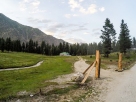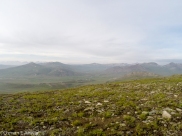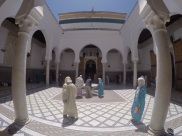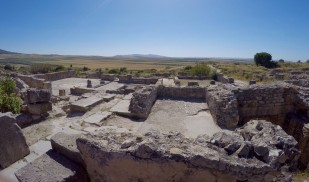My heart alway used to sink at the sight of Nicholsons Obelisk, towering high atop Margalla pass near Taxila on the left flank of GT Road, as one travels from Rawalpindi towards Peshawar. It bode that my boarding school, Cadet College HasanAbdal, was only a 30 mins drive away and I would have to part ways with my parents who would accompany me and my brother on the drive back to our college after vacations. I remember asking my father on one of our drives back if he knew what that monument was. He had remarked that it was a monument named after a British General Nicholson. My father himself being an alumni of the same college had frequented that road many a times.
I knew very little who Brigadier General John Nicholson was at the time, but assumed he must have been a very distinguished and remarkable man to have a towering monument in his remembrance. It wasn’t until recently that I read about his moveable column, a tactical military formation, he led at the uprising of 1857 to crush the rebellion against the British rule, the atrocities he committed and his extremely prejudiced, racist hatred directed towards the people of the Indian subcontinent and the Afghans alike, that I realised how important it is for us to recognise this British era monument as the very embodiment of our colonial subjugation. William Dalrymple in his book ‘The Last Mughal’ recounts that by the time the uprising starts against the British in Meerut in 1857, Nicholson had already developed a very strong hatred for the locals
Nicholson loathed India with a passion (‘I dislike India and its inhabitants more every day’) and regarded only the Afghans as worse (‘the most vicious and bloodthirsty race in existence’). These views he had already formed before he was captured during the disaster of the 1842 Afghan War. By the time he was released, only to discover the his younger brothers dead body, with his genitalia cut off and stuffed in his mouth, his feeling about Afghans – and indeed Indians and Muslims of any nationality – were confirmed: he felt he said, merely ‘an intense feeling of hatred. Only his wish to spread the Christian Empire of the British in this heathen wilderness kept him in the East.
[Allen, Soldier Sahibs p.55,62 cited Dalrymple, The Last Mughal p.197]
When Sir John Lawrence, the Chief Commissioner of the Punjab at the time, gave Nicholson a mixed-race Anglo-Indian subordinate, Nicholson felt insulted and humiliated as he wrote to his friend Herbert Edwardes, the Commissioner of Peshawar
Nicholsons response was to threaten to murder Lawrence, or, as he put it, ‘commit justifiable homicide…Individuals have their rights as well as nations’ as he wrote to Edwardes
[Oriental and India Office Collections, letter from Nicholson to Edwardes datelined Peshawar 23 April 1857 cited Dalrymple, The Last Mughal, p.200]
Perhaps the Brigadier General did attract some unsuspecting admirers amongst the locals during his time and was called “Nikul Seyn”, possibly as a mark of respect as the local norms dictated at the time. Nonetheless, Charles Griffiths suggests in his account on the Siege of Delhi 1857, that the word Seyn (Saeen) in Nicholson’s case implied more than that
Many stories are told of his prowess and skill, and he ingratiated himself so strongly amongst a certain race that he received his apotheosis at their hands, and years afterwards was, and perhaps to this day is, worshipped by these rude mountaineers under the title of “Nikul Seyn”.
[Griffith, The Narrative of the Siege of Delhi with an account of mutiny at Ferozepore in 1857, p.119-20]
However others do contest this as a Victorian myth. The young Lieutenant Edward Ommaney who accompanied Bahadur Shah Zafar to exile in Rangoon was ‘one of the few who remained immune to the hero worship of this great imperial psychopath’ and was shocked by Nicholsons absurd viciousness directed not only towards the ‘mutineers’ (from his perspective) but also towards the unfortunate cook boys as Dalrymple recounts in his book
He shows himself off to be a great brute,’ Ommaney wrote in his diary on 21st July. ‘For instance he thrashed a cook boy, for getting in his way in the line of the march (he has a regular man, very muscular to perform this duty). The boy complained, he was brought up again, and died from the effects of the 2nd thrashing.’
[Diaries of Col. E. L. Ommaney, entry for 21 Jul 1857 cited Dalrymple, The Last Mughal p.307]
In another incident he hung all the regimental cooks. As the officers in the mess waited for their dinner, Nicholson walked into the mess tent and announced
‘I’m sorry gentlemen to have kept you waiting for your dinner, but I have been hanging your cooks’. According to Nicholson he had discovered through his spies that the regimental cooks has just laced the officers soup with aconite. He first invited the cooks to taste the soup, then, when they refused, force-fed it to a monkey. The monkey expired within a few seconds. Within minutes, as one of the officers present put it, ‘our regimental cooks were ornamenting a neighbouring tree’.
[Dalrymple, The Last Mughal, p201 cited Wilberforce, An Unrecorded Chapter Of the Indian Mutiny p.88-9]
History of the subcontinent has other much more infamous generals who were off course celebrated by the British as saviours of the Raj. With the recent centenary of the massacre at Amritsar, everyone in India is already familiar with General Reginald Dryer, who on 13th April 1919 led and ordered his soldiers to open fire on some 20,000 people including women and children who had gathered at the Jallianwala Bagh, mostly to celebrate the Sikh festival of Baisakhi. Off course there is no official British apology still for that atrocity!
In Oxford in 2015/16 there was a campaign albeit unsuccessful to remove the statue of Cecil Rhodes – through his will Rhodes scholarship is administered, and whose imperialist legacy the protesting students did not want to be celebrated.
Although I support the preservation of Nicholsons Obelisk as a part of our colonial heritage, what I contest is the narrative that is built around it. For example, the news report published in Dawn on 9th October 2016, about the first ever archeological survey conducted in the federal capital, concludes with a remark about Nicholson, ‘His life and career became a source of inspiration for a generation of British youth seeking adventure in emerging colonies, especially the Indian subcontinent.’ A lot more needs to be added to it as to what he was for the locals and how prejudiced and despicable his views and actions were! The British wanted to pay homage to Nicholson’s imperial achievements for the colonial empire. To us it should serve as a reckoning of our past. It is imperative for us to know the man for what he was, as opposed to what the East India Company and the colonial empire wanted to remember him as.
My heart still sinks at the sight of this obelisk though, despite the approach to my alma mater now bringing back many a fond memories. Globally, in academia there is a strong student led movement taking place across universities about decolonising the curriculum. It is all the more important for us in Pakistan to decolonise our educational system as well. We ought to be taught more openly and critically about our colonial history in our schools and colleges. So no unsuspecting youth is misled by any monument of the colonial era and takes a villain for a hero.
(An edited version of this article appeared in Dawn)



































































